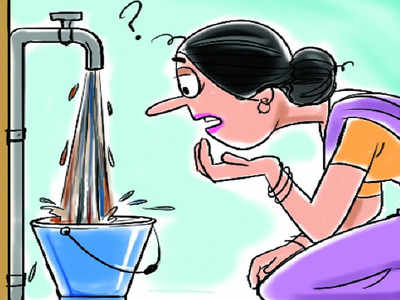The Hindu 28.11.2017
Dual piping and Linganmakki in BDA water plan
However, its plan doesn’t mention rainwater harvesting, which is being
seen as a major lacuna, while BWSSB is aggressively pursuing the same
The city, which is already water deficient, will have a crisis on its
hands in less than two decades with a shortfall of approximately 2,000
million litres per day (MLD) of potable and non-potable water for
domestic and industrial use.
In its Draft Revised Master Plan
2031, the Bangalore Development Authority (BDA) has reduced the
projected shortfall to around 850 MLD by making a case for a Dual
Pipeline System, which allows for water to be recycled, and
conservation. It also provides another solution: divert water from
Linganamakki dam across the Sharavathi in Shivamogga district, over 430
km away, as proposed by the Tyagaraja Committee. However, this has been
strongly contested by water conservation experts and farmers. According
to water conservationists, the BDA’s projections are on the conservative
side. “The water woes of the city in 2031, with over 20.03 million
people, will be much worse than what the draft RMP 2031 predicts,” said
S. Vishwanath, a water conservation expert. While for most megacities,
the per capita water demand is 200 LPCD (multiplied by the total
population), which includes industrial water demand as well, the draft
RMP considers 135 LPCD for domestic (multiplied by the total population)
and 90 LPCD (multiplied by the working population, which is taken as
60% of the total population) for non-domestic — estimates that will
derail projects. The plan does not mention Rain Water Harvesting (RWH), a
major lacuna, even as the BWSSB has begun aggressively pursuing RWH
even for old buildings to reduce the per capita demand.
The draft
plan relies on dual piping, for all new houses and the future
population, through which recycled water will be supplied for all
non-potable purposes. The goal is to harness 865 MLD of recycled water,
and the excess can be used to recharge lakes and thereby ground water
levels. With these measures, the BDA predicts that the shortfall will be
reduced from about 2,000 MLD to 850 MLD, which can be met from the
ground water table. But the city’s reliance on ground water will be 27%
more than what it is today.
No mention of STP
Even as
the draft plan heavily relies on recycled water for demand reduction,
it is silent on the sewerage network and Sewage Treatment Plant (STP)
infrastructure needed by 2031. The draft plan simply recommends an
expansion of BWSSB services for the entire Bengaluru Metropolitan Area
(BMA).

